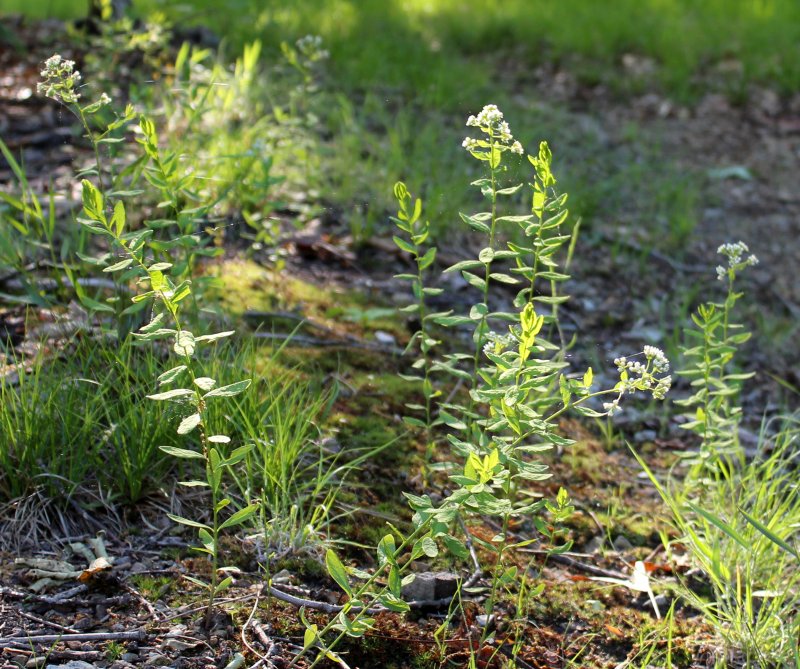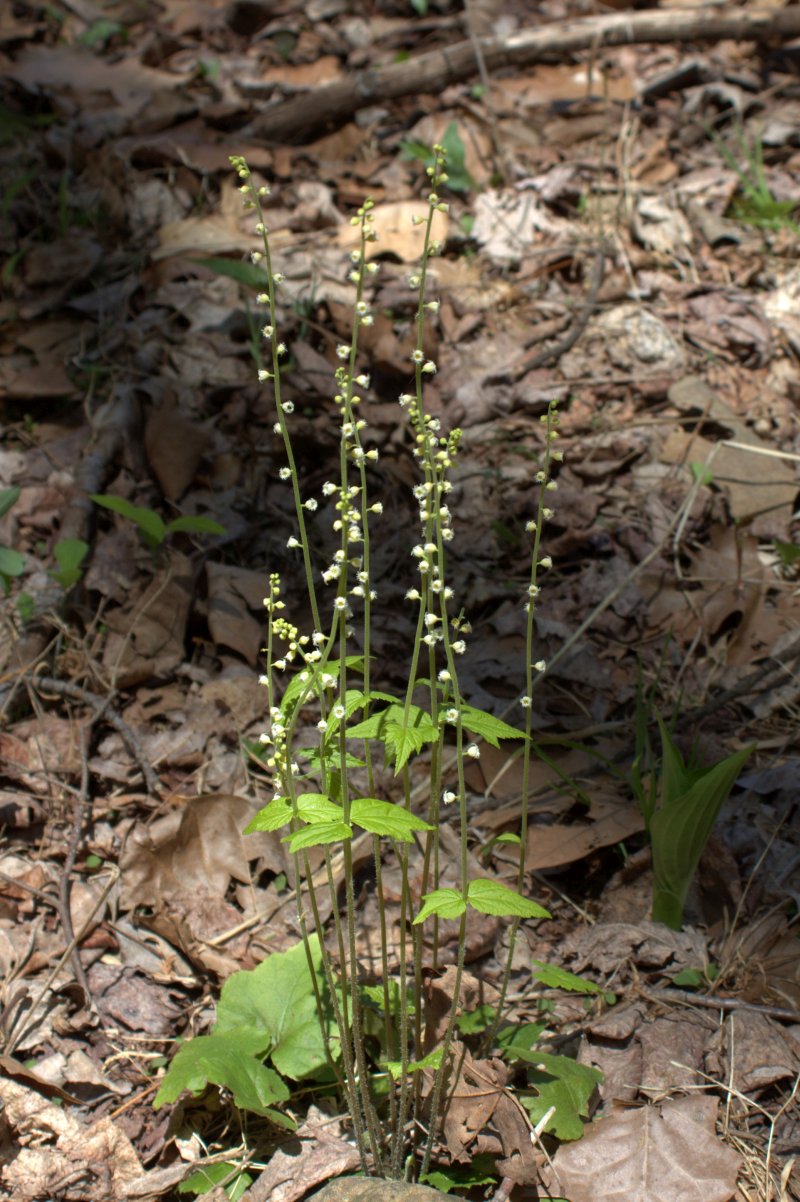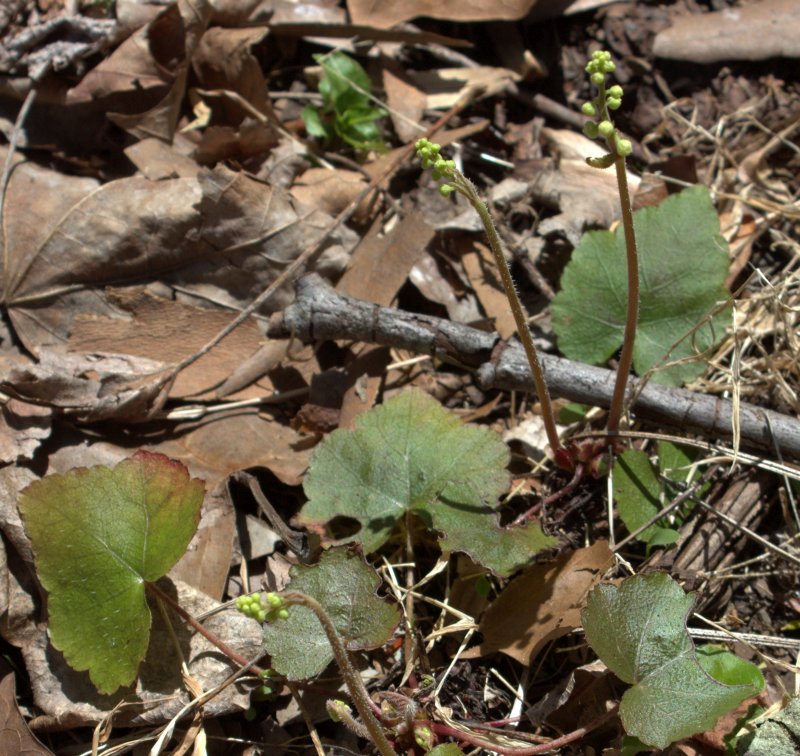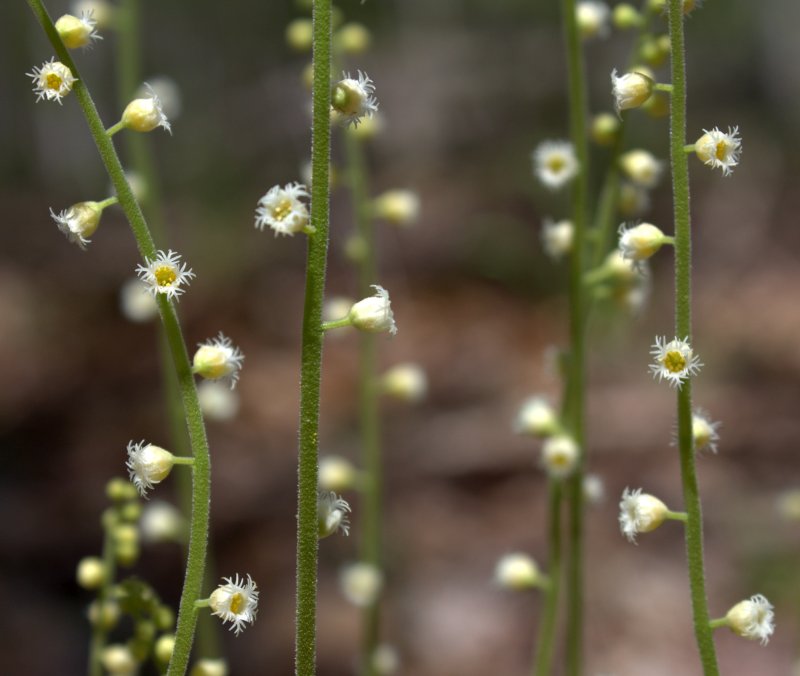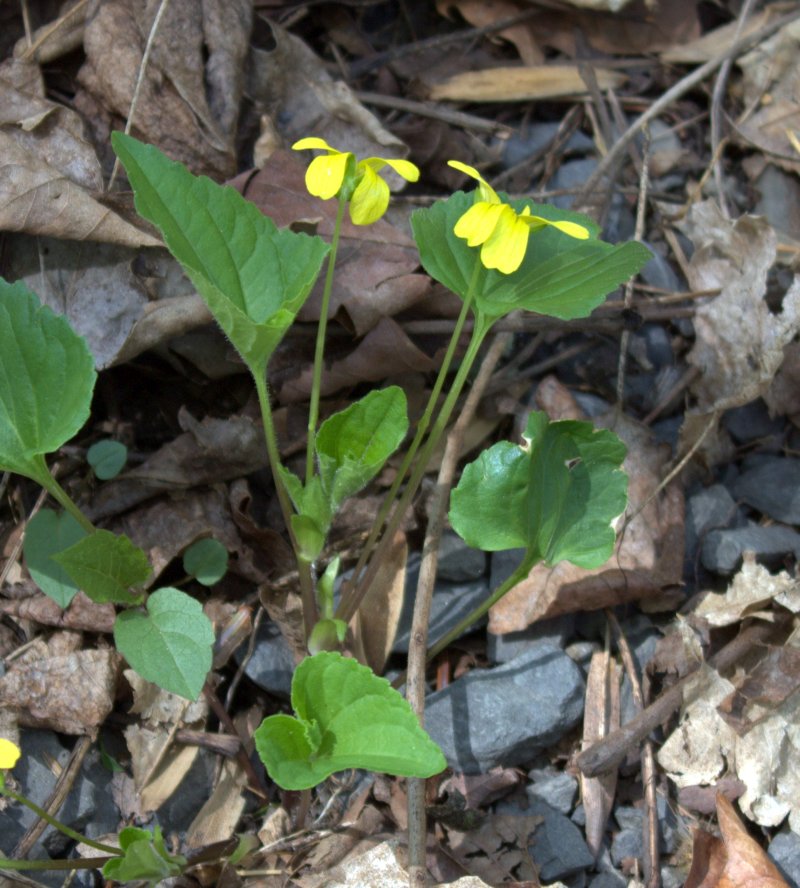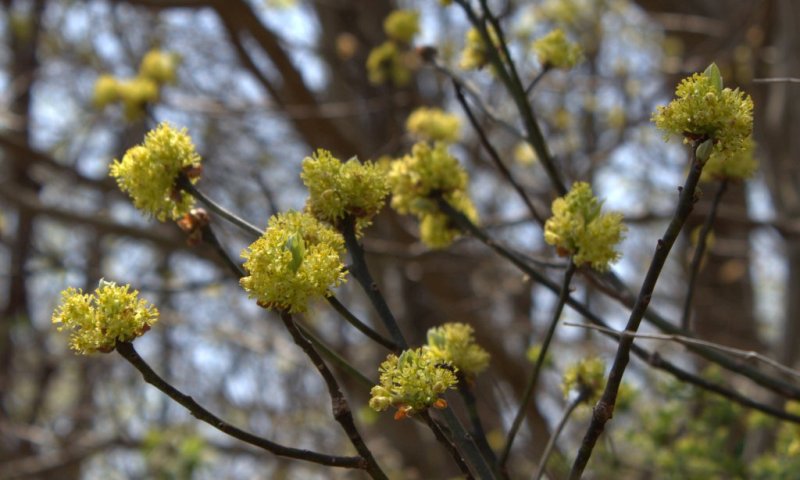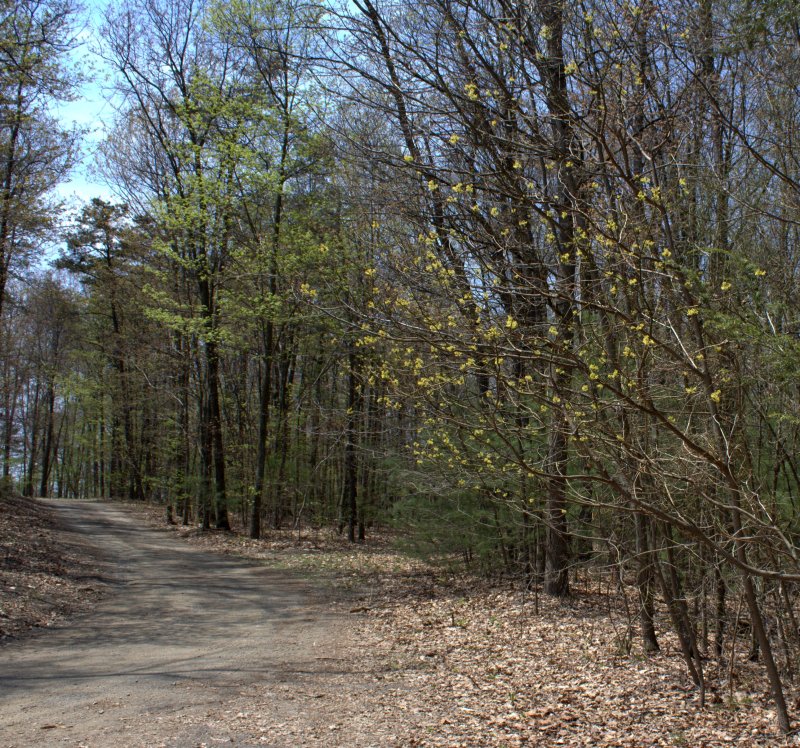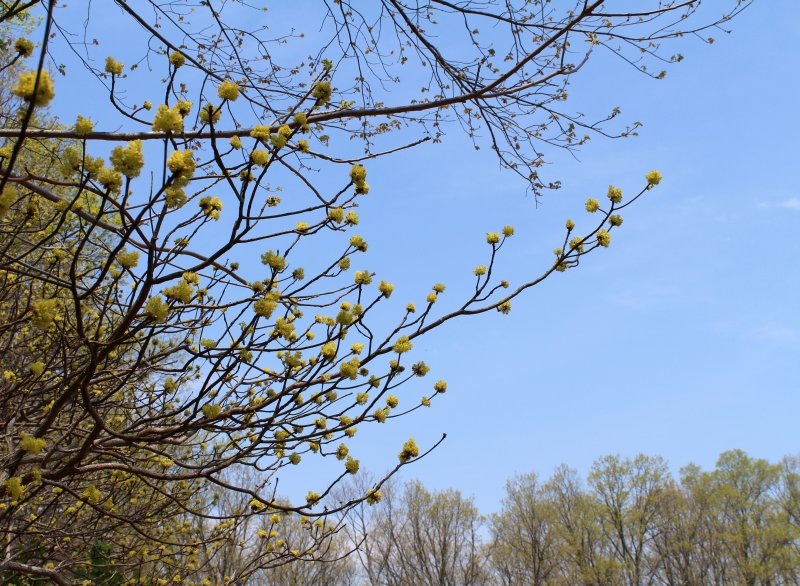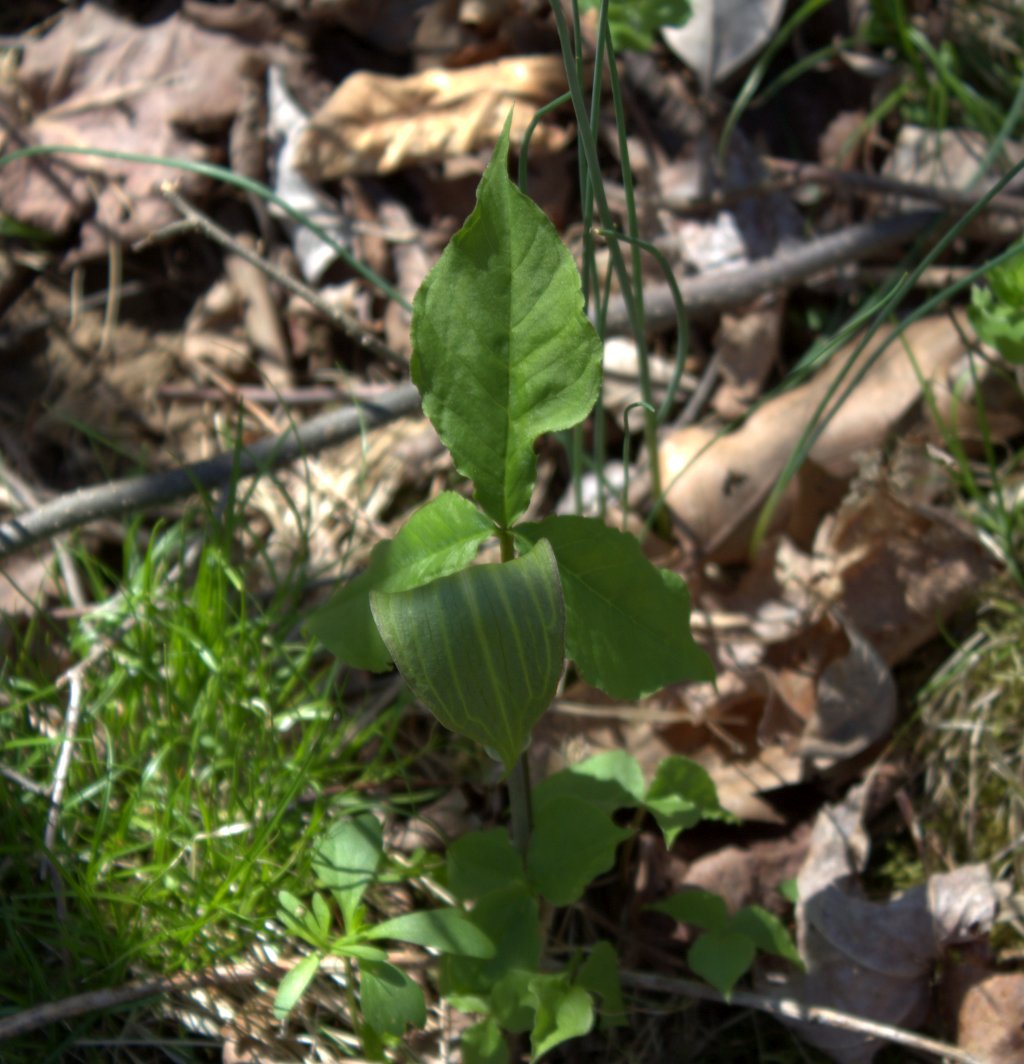Every year I visit this particular section of the woods to see how the Large Whorled Pogonia is making it.
Large Whorled Pogonia, Isotria verticillata, is a native orchid that we have growing wild on the mountain top. I’ve seen only a few flowers in the nine years since I discovered this group of plants and they were all blooming only in that one year. My pics of the flowering Whorled Pogonia were from 2010.
According to Peterson’s Field Guide to Wildflowers a close relative, the Small Whorled Pogonia, I. medeoloides, is a rarity to see in bloom, if at all:
“This plant remains dormant underground for as much as 10 to 20 years before reappearing.”
Who knows what factor governs the reappearance and blooming of the Large Whorled Pogonia.
